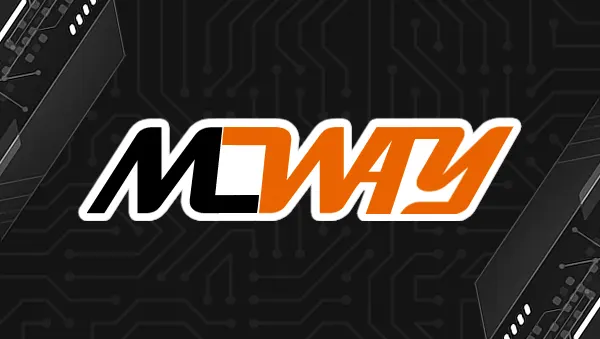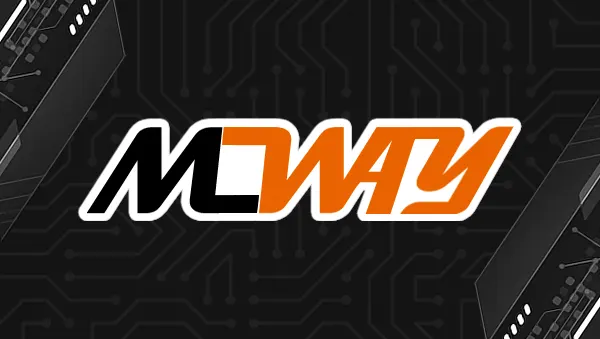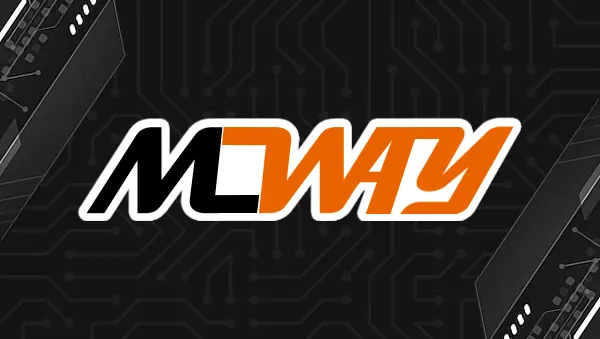Battle vs Hitters Battle Developer Insight 1
POSTED February 08, 2010
Sean Bailey is a gameplay designer on Major League Baseball® 2K10. He want to share with you a quote straight from the white board in his office. Check out this Batters vs Hitters Battle Developer Insight from 2K Sports.
Let’s walk through an at bat together and touch more on the pitching improvements that make this year’s game the most enjoyable baseball game I’ve ever played.
Right now, I literally have the controller in my hand with recently acquired Roy Halladay on the mound for the Phillies.

As you can see, we allow you to select your pitch this year before performing the gesture. By selecting the pitch before doing the gesture, we prevent you from accidentally throwing a pitch type that you never wanted to throw in the first place. The pitch selection means that you will always throw the pitch type that you intended to throw, regardless of how far off your gesture was. With Pablo Sandoval at the plate, I am going with my catcher’s suggestion in the 0-0 count: Cut Fastball. Upon selecting your pitch, a diagram will show you how the gesture should be performed in order to throw a pitch with the optimal control, break, and aim. The green zones in the diagram are the targets for where you want to move your right stick.
Since Halladay has a good control rating, these gesture targets, or green zones in the diagram are larger than those of some of his teammates, like Antonio Bastardo. Bastardo’s control rating is only a 70, making it tougher to precisely stop the 2nd gesture in the right spot.
Now that I’ve selected the Cut Fastball, it’s time to let it fly. The Inside Edge report shows me that Pablo Sandoval bats over .300 against right handed pitchers in all but 3 zones. Luckily, 2 of those 3 zones are low in the strike zone. Sorry Pablo. I’m not serving you any high heat just yet.
The first pitch is a ball. The Cutter missed the low, inside corner that I was trying to paint with Halladay and almost grazed Pablo’s leg.
On my gesture, I was supposed to stop at 9 o’clock. However, I moved the right stick too far past 9 o’clock (more like 7 o’clock…whoops), resulting in the pitch being overthrown in that direction. Had I done the opposite and completely stopped short of my gesture, the pitch would have been closer to the middle of the plate rather than outside for a ball. The right stick gesture this year dictates the placement of the ball in a way that is predictable. No more random pitch gestures with random results. If you stop short of your gesture on a 12-6 curveball, the pitch will be hung. If you go past your gesture on a 12-6 curveball, the pitch will be overthrown below the strike zone, or even into the dirt. This 1-to-1 relationship between the right stick gesture and final location of the pitch is consistent for each pitch type. Even better though, it gives the gamer a sense of command on the mound. And like we touched on earlier, the pitcher’s control rating plays a heavy role in how far off a pitch misses when the gesture is performed inaccurately. After pitching earlier today with Jonathan Sanchez, I really feel how much bigger the margin for error is with an ace like Halladay.
Back to Halladay vs Pablo. After going with the slider, I filled the meter 100% for a max pitch .
The Panda swings for the fences. Strike 1. When getting a max pitch, the batter’s contact chance is decreased and the pitch is thrown with ideal velocity and movement. The smaller the pitch meter is, the less breaking balls will move and the slower fastballs will travel. Think of a full meter as a way to represent the pitcher’s ratings. If I fill the meter 50% instead of 100%, Halladay’s cut fastball is no longer a rating of 88 for that pitch. This is crucial considering how important a pitch’s rating is to the batter’s chances of making solid contact, or just contact in general. And don’t worry - the likelihood of timing a max pitch is easier or harder depending on who is pitching and how tired they are. The 2K10 dev team did a great job making sure that the player ratings, player tendencies, and performance of the gamers’ pitching mechanics all come together in a realistic, learnable fashion. While accurately nailing the gestures is required for perfect aim, the degree of difficulty varies from pitcher to pitcher, and pitch to pitch. Since the slider is Halladay’s lowest rated pitch, it requires more accurate movement on the right stick and more precision in timing the meter compared to his higher rated sinker.
Let’s get back to this 1-1 count between Halladay and Sandoval. Better yet, now that I’ve touched on the pitching mechanics, let’s pause the game and switch sides. I’m taking over for Pablo. It’s time to go over the new hitting mechanics.
As I take over at the plate with Pablo, I am informed that Sandoval is a .315 hitter with 9 HRs and 37 strikeouts after a 1-1 count . If pitching is about control, command, and avoiding the big mistake, hitting is definitely about waiting for the right pitch and working the count. Get ahead in the count, and you’ll be more likely to see a fastball for a strike. Fall behind in the count, and you’ll be chasing breaking balls outside of the strike zone. Face a pitcher like Halladay, and both the balls and strikes are separated by inches. Face the 4th or 5th man in the rotation, and strikes are down the middle more often while the balls are way outside of the strike zone. That’s the beauty of incorporating Inside Edge™ into the CPU AI hitting and pitching logic. Per count, every pitcher will throw what he throws in real life and will try to hit the spots that he hits in real life.
Sticking to the realism theme, every batter has a new eye rating this year (both vs lefties and righties). The higher the eye rating, the more likely your batter is to see the pitch type as it is being thrown as well as what part of the strike zone it is being thrown to. By pitch type, I mean fastball, breaking ball, or change-up. You won’t know the exact pitch type, but by knowing which of the 3 categories the pitch is, your timing will be that much better on the swing.
Unfortunately for me, Pablo’s eye rating vs righties is only a 64. The next pitch is a 12-6 curveball by Halladay that just drops into the strike zone. No swing. Strike 2. The pitch started out looking a lot like a fastball that would have been high for a called ball 2. If Pablo had the eye rating of a guy like Albert Pujols, I would have had a chance at knowing it was a high breaking ball and waited to unload on it. If I hadn’t read so deep into Halladay’s scouting report, I wouldn’t have ruled out a 12-6 curve being thrown.
Only 18% of his pitches in real life are 12-6 curveballs compared to 71% which are fastballs. I should clarify that by no means are the pitch tells too effective. They simply provide occasional and subtle hints to the batters in real life who are patient, read pitches, and draw walks. While Pablo had an outstanding 2009 season, he is not what we would call a patient hitter.
Looking to end the at bat, Halladay delivers a cutter low and away, hoping to graze the strike zone. Knowing it is a strike (thanks to the new batting camera and new strike zone which make it so much easier to watch the incoming ball), I swing away with the contact swing. Foul ball.
My timing was a little late, but I’m still alive. In Major League Baseball® 2K10, we completely re-wrote the physics of the hit distribution. The location of the pitch and the timing of the swing have everything to do with where that ball is hit and how hard it is hit. Replicating real life, the location of the pitch and my late timing is what drove the ball 20 feet foul to the left of the 3rd base line. Had I timed my swing perfectly against that low and away strike, Pablo could have been looking at a line drive base hit over the 3rd baseman’s head. My timing was late and the angle of the bat during contact resulted in a foul ball. Want to pull a ball and rip it down the base line for a double? Start the swing early against an inside pitch when making contact, just like in real life. If you want to hit a blooper over the infield to opposite field, swing a little later against an outside pitch. Major League Baseball® 2K10 is about playing baseball, not spamming the swing stick in hopes of base hits that are randomly sprayed about the field. If you find yourself hitting too many fly outs to the outfield, it’s time to lay off the power swing against high pitches. If you find yourself grounding into double plays, it’s time to lay off those low and away pitches being thrown for balls.
Oh, by the way, while writing this, Pablo just grounded out to 3rd. Faced with a 1-2 count, I resorted to the defensive swing. The defensive swing is a new swing type in Major League Baseball® 2K10. Flicking left or right on the right stick will perform a defensive swing. This swing is a low risk, low reward swing that is good to use when faced with 2 strikes. If you aren’t sure whether an incoming pitch is going to be a ball or a decisive 3rd strike, flick the right stick to the left or right to protect the plate. It’s all about working the count and waiting for the right pitch. This is a good way to foul pitches off to stay alive. In my case with Pablo, the defensive swing resulted in a ground out to 3rd. For other players with a lesser contact rating, they may swing and miss. However, you still have a better contact chance and a higher foul ball chance when using the defensive swing. In addition to staying alive with 2 strikes while waiting for the dream pitch, defensive swings can also wear down a starting pitcher who is trying to go the full 9 innings by racking up a high pitch count.















